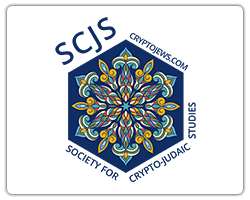La Granada
Society for Crypto-Judaic Studies Online Newsletter
La Granada appears throughout the year, bringing you up to date on member news that’s time-sensitive: conference calls for papers as well as conference reminders, and other informative news you can use.
Click here to join the La Granada mailing list
About The Pomegranate In Our Newsletter Logo
When selecting the logo for the new SCJS online newsletter, the process was one of pure imagery. Artistry reflected imagination. As art, it can portray whatever the viewer may find in it. Designers of the pomegranate logo selected this royally luscious fruit at first because of its historical connection between Mesopotamia and the Iberian Peninsula, and its later introduction to the Americas by Spanish settlers in the early 1500s. It is mentioned by Homer in Greek mythology and included in the Hebrew Bible within poems written by Solomon. It was cherished by Mohammad and included in Moorish architecture. It appears in Christian artworks and was invoked as a symbol by Queen Isabella of Spain.
The pomegranate is considered by many cultures and traditions to be a fertile symbol of life and renewal. How fitting it is, then, to celebrate the pomegranate as a symbol of this Society dedicated to researching, gathering, and disseminating a broad spectrum of information about the lives of crypto-Jews throughout the past five centuries and today.
Like the many-seeded pomegranate, Jews of the Iberian Peninsula were scattered across the world. Hidden beneath a protective shell of secrecy, seeds of the banished and escaped multitudes took root, becoming early establishers of communities in the New World and in enclaves around the Old World, in North Africa and the Ottoman Empire. Like the pomegranate tree, crypto-Jews have survived harsh conditions, emerging from branches that appear lifeless during the deciduous winter season of diaspora.
La Granada’s readership includes scholars and researchers within various academic disciplines from the American Southwest, all around the country and the world; talented artists, musicians, and writers; descendants of crypto-Jews who “return” and want to share their voyage of discovery with others; descendants of crypto-Jews who are interested in the historical but not necessarily religious implications of their discoveries; genealogists; geneticists; speakers of English, Spanish, Ladino, Yiddish, Turkish, Aramaic, Hebrew and other languages and dialects; and lay people with and without Iberian, Sephardic, or crypto-Jewish ancestors.
Published in HaLapid, Spring 2014



